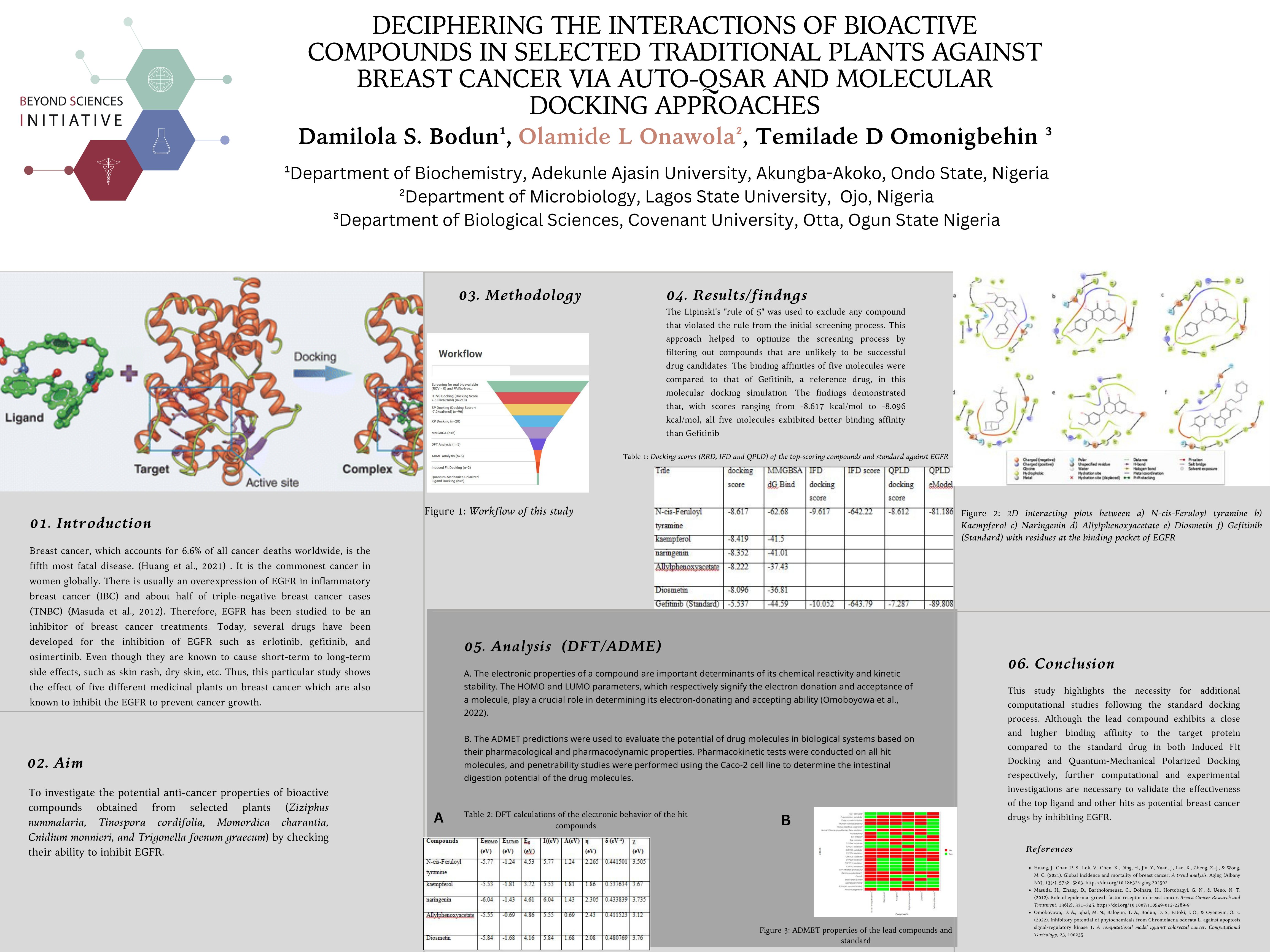Olamide Onawola
Conference 2024 Poster
Poster Title
Molecular Docking of Medicinal plants compounds as new potential inhibitors of EGFR.
Authors and Affiliations
Damilola Bodun1, Olamide Onawola2, Temilade Omonigbehin3,4
1. Department of Biochemistry, Adekunle Ajasin University
2. Department of Microbiology, Lagos State University
3. Department of Biochemistry, Lagos State University
4. Department of Biological Sciences, Covenant University
Abstract
Background
Breast cancer is a severe disease that has a significant impact on numerous women worldwide, and is associated with the overexpression of EGFR, a critical enzyme involved in cancer progression. Although chemotherapy and targeted therapy have shown some success, the emergence of drug resistance, toxic side effects, and lack of efficacy in certain patients remain major challenges. As a result, there is an increasing desire to create novel therapeutic agents using natural sources that could potentially provide better effectiveness and fewer adverse effects.
Methods
The study utilized a range of computational techniques, including virtual screening and structure-based screening via the Maestro Schrodinger software, to identify potential compounds for breast cancer therapeutics.
Results
Among the screened compounds, five were found to have superior docking scores to the standard drug, Gefitinib. Further analysis using MMGBSA revealed that the lead compound, N-cis-Feruloyl tyramine, had a significantly better binding affinity to the target compared to the standard drug. Quantum calculations and ADMET predictions using the AdmetSAR server were then performed to evaluate the top-ranked compounds. Interestingly, the lead compound was found to be a P-gp substrate and not hepatoxic, which are significant advantages over Gefitinib.
Conclusions
Although these results are encouraging, additional research is required to verify the efficiency and safety of the compounds discovered in this study through preclinical and clinical trials. Nevertheless, the use of computational methods to identify natural compounds for the treatment of breast cancer represents a hopeful approach to developing safe and effective therapies.


Leave A Comment